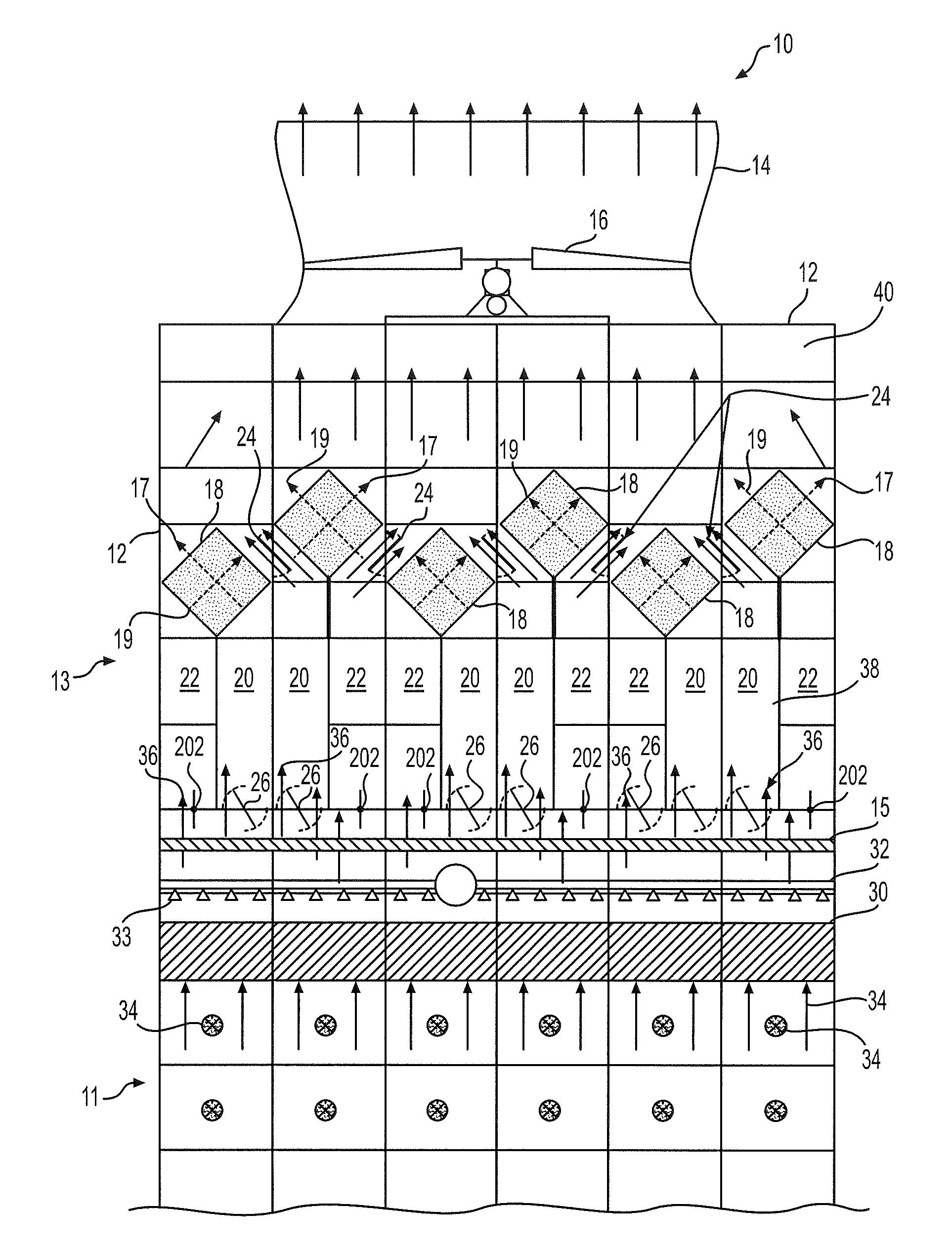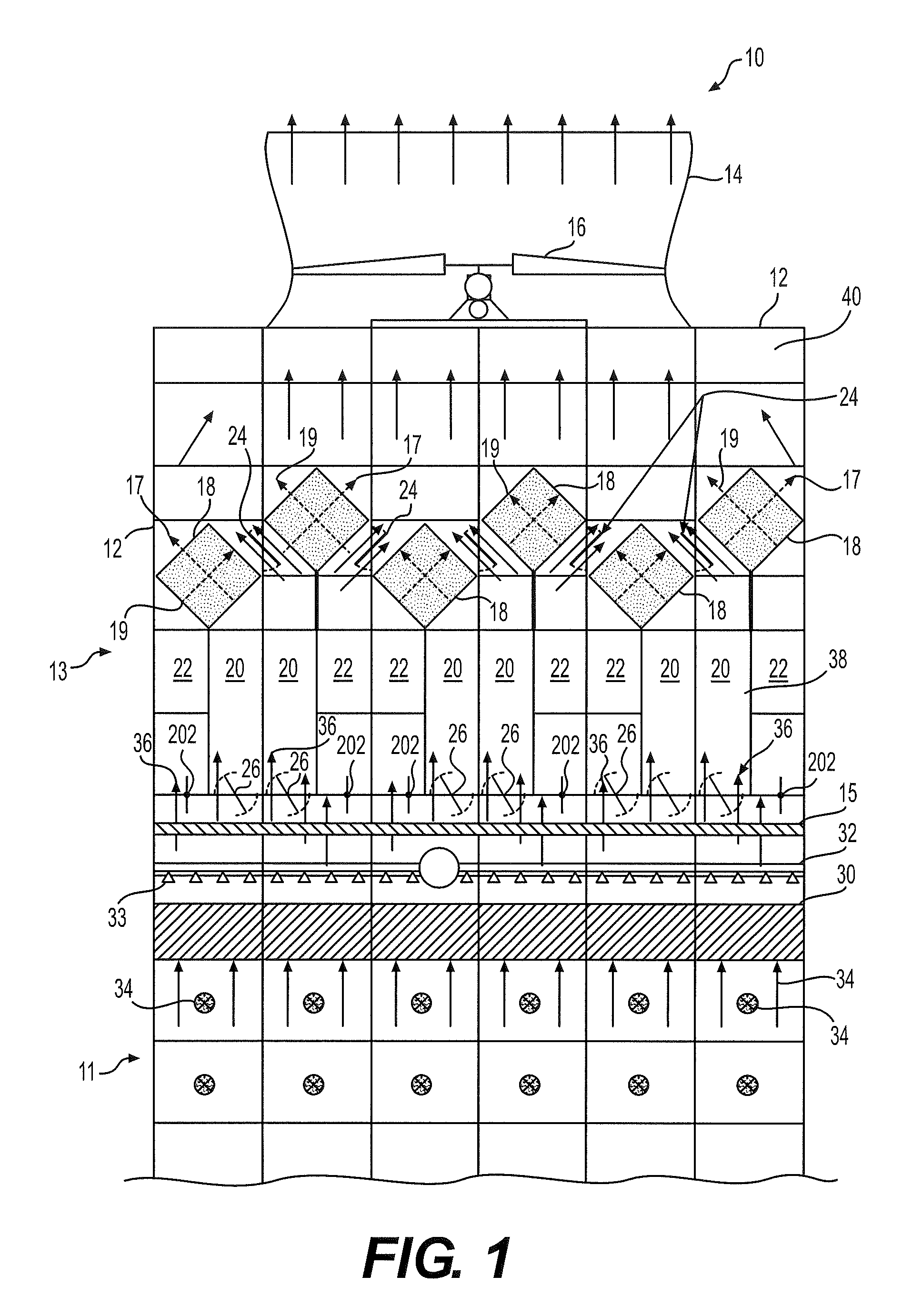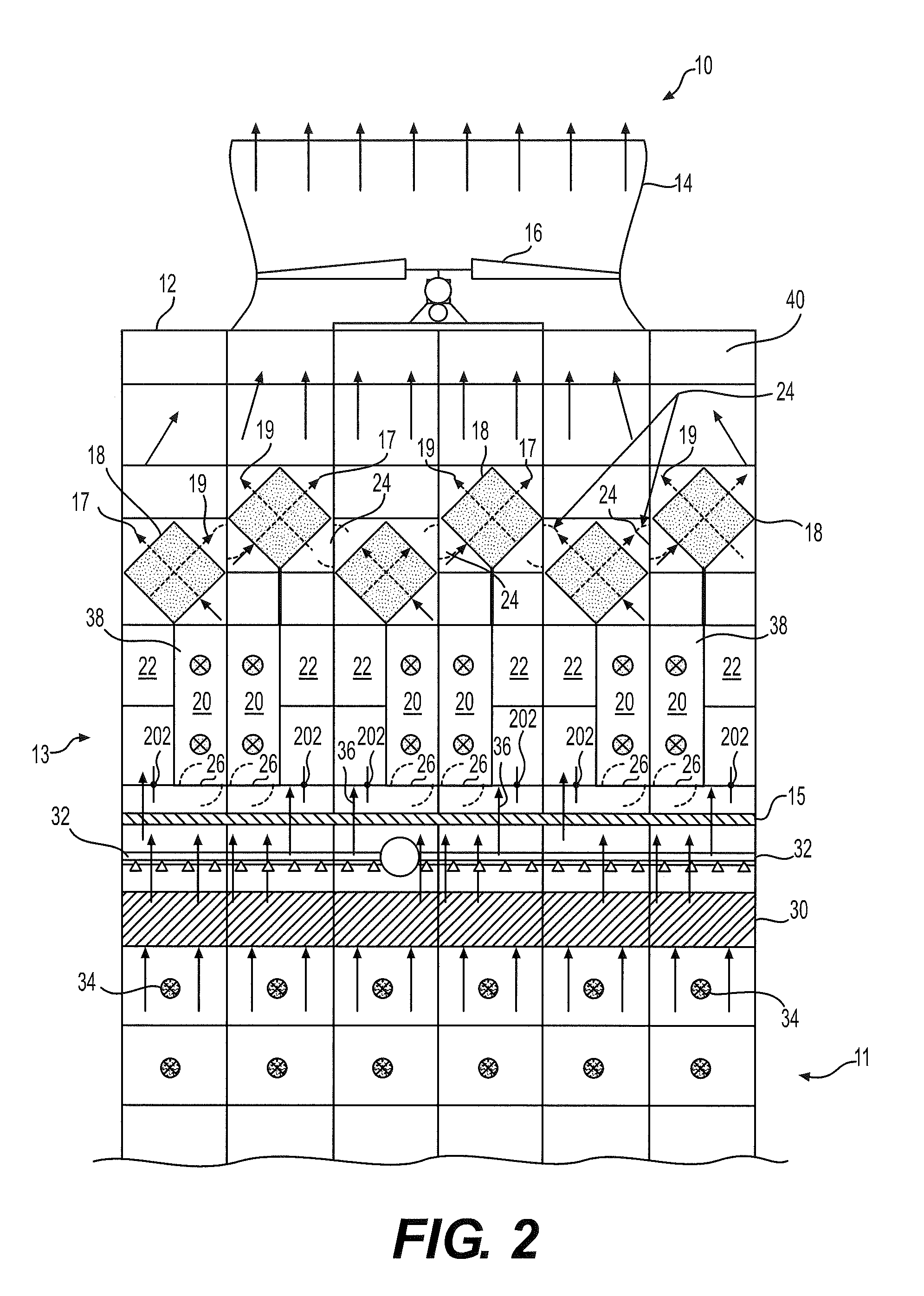Air-to-air heat exchanger bypass for wet cooling tower apparatus and method
a technology of air-to-air heat exchanger and cooling tower, which is applied in the direction of lighting and heating apparatus, liquid degasification, separation processes, etc., can solve the problems of moisture in the plume being frozen, low lying fog, and moisture in the plume being created by moisture, so as to reduce the heat content of the air stream
- Summary
- Abstract
- Description
- Claims
- Application Information
AI Technical Summary
Benefits of technology
Problems solved by technology
Method used
Image
Examples
Embodiment Construction
[0038]Referring now to the figures wherein like reference numerals indicate like elements, FIGS. 1-3 depict a cooling tower apparatus, generally designated 10 having a support frame assembly 12 and a shroud 14 within which an air current generator (axial fan) 16 operates. The cooling tower 10 is generally comprises a wet, direct cooling section 11 and a dry, indirect cooling section 13 that are separated by an eliminators 15. The cooling tower 10 includes a plurality of heat exchanges modules 18 positioned and oriented in a series, each in fluid communication with dry air ducts 20 and wet air ducts 22. The individual exchanger modules 18 preferably have a generally diamond shape or diamond configuration however may alternatively be any functional geometry. As previously discussed, cooling tower 10 also includes a series of ambient or dry air ducts 20 each having air inlets or dampers 38, along with a series of warm air or wet air ducts 22 through which warm, moist air, or effluent, ...
PUM
| Property | Measurement | Unit |
|---|---|---|
| thickness | aaaaa | aaaaa |
| thickness | aaaaa | aaaaa |
| temperature | aaaaa | aaaaa |
Abstract
Description
Claims
Application Information
 Login to View More
Login to View More - R&D
- Intellectual Property
- Life Sciences
- Materials
- Tech Scout
- Unparalleled Data Quality
- Higher Quality Content
- 60% Fewer Hallucinations
Browse by: Latest US Patents, China's latest patents, Technical Efficacy Thesaurus, Application Domain, Technology Topic, Popular Technical Reports.
© 2025 PatSnap. All rights reserved.Legal|Privacy policy|Modern Slavery Act Transparency Statement|Sitemap|About US| Contact US: help@patsnap.com



